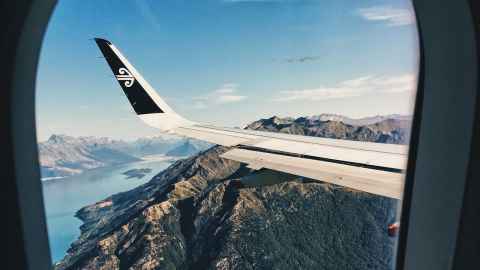The trouble with bubbles: When will we get quarantine-free travel in the Pacific?
22 March 2021
Opinion: Much of the Pacific is Covid-free, so our island neighbours need to negotiate opening up travel with New Zealand and other countries carefully. Dr Collin Tukuitonga explains the factors at play.

Most Pacific Island nations have remained free of Covid-19 since the pandemic began in early 2020. This is attributed mainly to early and effective border closures and public health measures by island governments.
Many of the islands’ economies rely heavily on trade and tourism, and most are now struggling with employment and income as a result of the prolonged lockdowns. For example, 80% of the Cook Islands economy is powered by tourism, and the absence of tourists has had a major negative impact on lives and livelihoods of people in that nation.
As a result, Pacific business and political leaders are exploring ways of opening their borders to tourists and other travellers while minimising the risk of introducing Covid-19 into their countries. Families also welcome the prospect of reconnecting with whānau living in the islands. In addition, political leaders in New Zealand are calling for less restrictive measures at the borders to enable seasonal and other workers from the islands to come to New Zealand to assist employers in areas where there is a labour shortage. The leader of the opposition has recently called for a quarantine-free-travel QFT arrangement with Fiji, Tonga and Sāmoa.
The Cook Islands has operated a one-way quarantine-free travel (OWQFT) arrangement with New Zealand since February 2021. Niue is about to start a similar arrangement this week. This arrangement has been widely accepted by local people and those needing medical referrals to Auckland.
Many Pacific nations who wish to see two-way quarantine-free travel (TWQFT) in place as soon as possible are also keen to ensure the risk of introducing Covid-19 is minimised.
The outbreak in Papua New Guinea excludes any possible travel bubble with other Pacific nations. This situation could escalate rapidly posing a risk to the entire region unless border measures remain in place for travellers to and from PNG.
Australia remains the priority for New Zealand given the social, economic and political benefits of an early TWQFT arrangement. A state-by-state TWOQFT arrangement is likely to be the preferred arrangement.
Much remains uncertain in the evolution of the Covid-19 pandemic and any travel bubble agreed between nations needs to closely monitored and suspended if needed. Island nations should take particular note of community cases in New Zealand as a trigger for reviewing agreed arrangements.
Island nations looking to implement TWQFT arrangements should also consider early vaccination of their populations or delaying planned travel bubbles until the majority of the local populations have been vaccinated.
Dr Collin Tukuitonga is the inaugural Associate Dean (Pacific) at the Faculty of Medical and Health Sciences
This article reflects the opinion of the author and not necessarily the views of the University of Auckland.
Used with permission from The Spinoff, The trouble with bubbles: When will we get quarantine-free travel in the Pacific? 22 March 2021.
Media contact
Paul Panckhurst | Media Adviser
Mobile: 022 032 8475
Email: paul.panckhurst@auckland.ac.nz